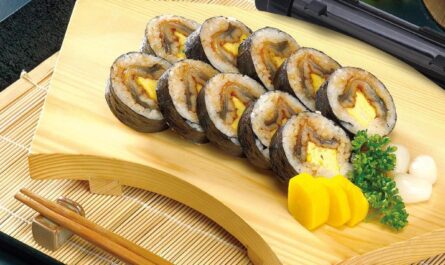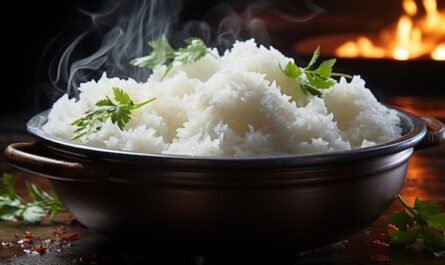For sushi enthusiasts, the journey to crafting the perfect sushi begins long before the fish is sliced or the rolls are shaped. At the heart of every sushi masterpiece is the rice. Choosing sushi rice every time is a crucial step that can significantly influence the texture, taste, and overall experience of this beloved Japanese dish.
Understanding the importance of the right rice is essential to elevating your sushi-making skills. Whether you’re a seasoned chef or a home cook, knowing what to look for in sushi rice can make all the difference.

The Importance of Sushi Rice
Sushi rice, or ‘shari’, is more than just a filler; it’s a fundamental component that binds the elements of sushi together. The right rice enhances the flavor of the fish and complements the delicate balance of sushi’s ingredients.
Why Quality Matters
The quality of rice affects not only the taste but also the texture and presentation of sushi. High-quality sushi rice should be sticky enough to hold its shape, yet soft and slightly chewy.
Understanding Rice Varieties
Not all rice is created equal, especially when it comes to sushi. The type of rice you choose can impact the final product. Let’s explore some popular options.
Types of Rice for Sushi
Short-Grain vs. Medium-Grain Rice
Short-grain rice is typically preferred for sushi due to its higher starch content, which gives it the ideal sticky texture. Medium-grain rice, while not traditional, can also be used, though it may not hold together as well. For a detailed comparison, check out our article on sushi rice vs. medium grain.
Arborio Rice
While Arborio rice is commonly used in risotto, some might wonder if it can substitute for sushi rice. However, its texture and flavor differ significantly. Learn more about this comparison in our piece on sushi rice vs. Arborio rice.
Glutinous Rice
Often mistaken for sushi rice due to its sticky nature, glutinous rice isn’t suitable for sushi. It’s too sticky and lacks the right texture. Discover why in our article on sushi rice vs. glutinous rice.
Characteristics of the Perfect Sushi Rice
Starch Content
The starch content in rice determines its stickiness. High-amylopectin content in short-grain rice makes it ideal for sushi.
Aroma and Flavor
Good sushi rice should have a subtle aroma and a slightly sweet flavor that complements the other ingredients rather than overpowering them.
Texture
The texture should be soft yet firm, allowing the rice to hold together without being mushy.
Steps to Perfect Sushi Rice
Rinsing the Rice
Rinsing removes excess starch that can make the rice too sticky. It’s a crucial step in preparing perfect sushi rice.
Cooking the Rice
Using the right water-to-rice ratio is key. For tips on achieving the perfect consistency, refer to our guide on tips for perfect sushi rice.
Seasoning
The seasoning of sushi rice involves a mixture of rice vinegar, sugar, and salt. This enhances the flavor and adds the characteristic zing of sushi rice.
Tools for Sushi Rice Preparation
Rice Cooker
A rice cooker can ensure consistent results every time. It’s a worthwhile investment for sushi lovers.
Sushi Rice Thermometer
Ensuring the rice is at the correct temperature is vital for perfect sushi. Learn how to use a thermometer in our article on sushi rice thermometer use.
Common Mistakes to Avoid
Overcooking
Overcooking can result in mushy rice that doesn’t hold together well. It’s important to follow cooking instructions closely.
Skipping the Rinse
Skipping the rinse can lead to overly sticky rice, making it difficult to work with.
Improper Seasoning
Getting the seasoning right is crucial. Too much or too little can alter the flavor balance of your sushi.

FAQ
Can I use any type of rice for sushi?
While technically you can, it’s recommended to use short-grain rice for the best results due to its stickiness and texture.
How important is the water-to-rice ratio?
It’s very important. The wrong ratio can lead to rice that is either too dry or too mushy.
Is a rice cooker necessary?
While not necessary, a rice cooker can help achieve consistent results and is a helpful tool for regular sushi makers.
For more detailed information on rice varieties, consider visiting this guide to rice by Serious Eats.
This article contains affiliate links. We may earn a commission at no extra cost to you.




